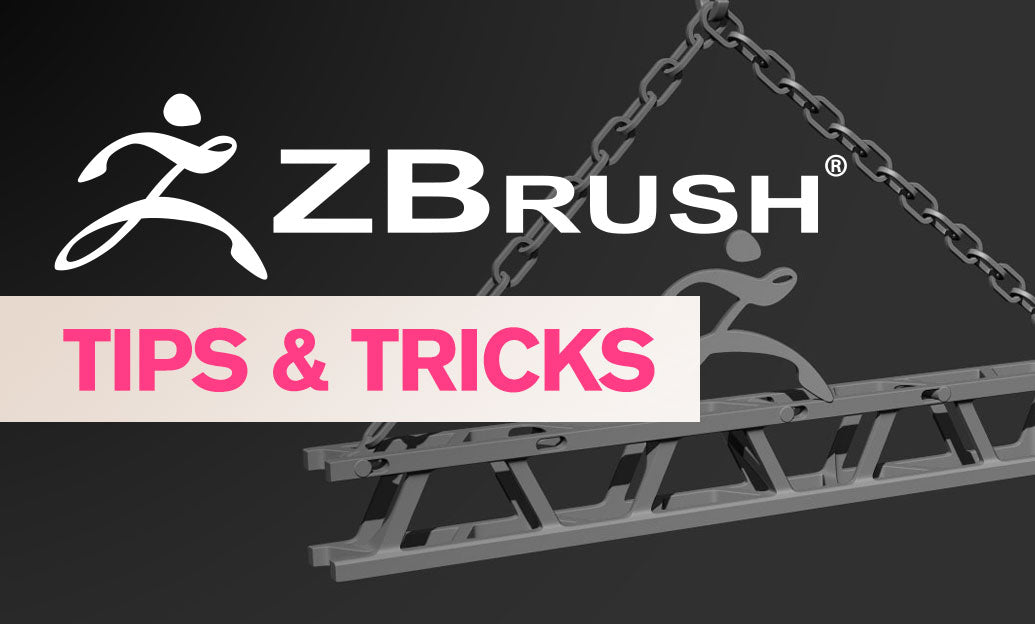Your Cart is Empty
Customer Testimonials
-
"Great customer service. The folks at Novedge were super helpful in navigating a somewhat complicated order including software upgrades and serial numbers in various stages of inactivity. They were friendly and helpful throughout the process.."
Ruben Ruckmark
"Quick & very helpful. We have been using Novedge for years and are very happy with their quick service when we need to make a purchase and excellent support resolving any issues."
Will Woodson
"Scott is the best. He reminds me about subscriptions dates, guides me in the correct direction for updates. He always responds promptly to me. He is literally the reason I continue to work with Novedge and will do so in the future."
Edward Mchugh
"Calvin Lok is “the man”. After my purchase of Sketchup 2021, he called me and provided step-by-step instructions to ease me through difficulties I was having with the setup of my new software."
Mike Borzage
ZBrush Tip: Mastering the Displace Noise Brush for Enhanced Detailing in ZBrush
May 11, 2025 2 min read

The Displace Noise Brush in ZBrush is a powerful tool for adding intricate surface details and textures to your models. Leveraging this brush effectively can significantly enhance the realism and complexity of your sculptures.
Key Techniques for Using the Displace Noise Brush
- Adjusting Noise Intensity: Control the strength of the displacement by adjusting the noise intensity settings. Lower intensities create subtle surface variations, while higher intensities can produce more dramatic effects.
- Customizing Noise Patterns: Utilize custom alphas or import noise textures to achieve unique displacement patterns. This customization allows for greater creativity and specificity in your detailing process.
- Masking Areas for Precision: Use masking tools to limit the displacement effect to specific areas of your model. This precision ensures that only desired regions receive the added texture, maintaining overall model integrity.
- Combining with Other Brushes: Integrate the Displace Noise Brush with other sculpting brushes, such as the Clay or Standard brushes, to build up complex textures and details incrementally.
- Utilizing Polygroups: Assigning different polygroups to various sections of your model can help manage and apply displacement effects more effectively, especially in intricate designs.
Best Practices for Maximizing Results
- Subdivision Levels: Ensure your model has sufficient subdivision levels before applying the Displace Noise Brush. Higher subdivisions allow for finer details and smoother displacement effects.
- Non-Destructive Editing: Use layers to apply displacement effects non-destructively. This approach allows for easy adjustments and experimentation without permanently altering the base mesh.
- Reference Materials: Incorporate reference images to guide your displacement patterns. This practice ensures that the textures you create are realistic and align with your project's requirements.
- Performance Optimization: Manage your system resources by working on smaller sections of the model when applying heavy displacement effects. This strategy helps maintain ZBrush's performance and responsiveness.
Resources for Further Learning
For a deeper dive into the Displace Noise Brush and other advanced ZBrush techniques, NOVEDGE offers a wealth of tutorials and courses. Their expert-led content can help you master the intricacies of ZBrush and elevate your digital sculpting skills.
Additionally, exploring community forums and engaging with other ZBrush users on platforms like NOVEDGE Community can provide valuable insights and tips. Sharing experiences and techniques fosters a collaborative learning environment, enhancing your proficiency with tools like the Displace Noise Brush.
Conclusion
Mastering the Displace Noise Brush in ZBrush enables artists to create detailed and textured models with ease. By following these techniques and best practices, you can enhance your workflow and produce high-quality sculptures that stand out. Leverage resources from NOVEDGE to continue expanding your knowledge and skill set in digital sculpting.
You can find all the ZBrush products on the NOVEDGE web site at this page.
Also in Design News

Advancing Sustainable Design: The Role of Eco-Friendly Software in Architecture and Engineering
May 11, 2025 5 min read
Read More
Revit Tip: Optimizing Revit Projects: Custom Graphic Styles for Enhanced Clarity and Communication
May 11, 2025 2 min read
Read More
AutoCAD Tip: Enhancing Dimension Precision with Dimjogline and Dimspace Commands in AutoCAD
May 11, 2025 2 min read
Read MoreSubscribe
Sign up to get the latest on sales, new releases and more …


